Τhe Scutum of Dura-Europos: The only surviving Roman shield
The scutum from Dura-Europos is the only surviving semi-cylindrical shield (scutum) from Roman times.

In the annals of history, where the echoes of ancient battles still resonate, the discovery of the Scutum from Dura-Europos stands as a testament to the Roman legionary's might and the enduring legacy of Rome's military genius.
What is the Scutum?
This semi-cylindrical shield, dating from the mid-3rd century AD and referred to as a scutum, was utilized by the legionaries of the Roman Empire.
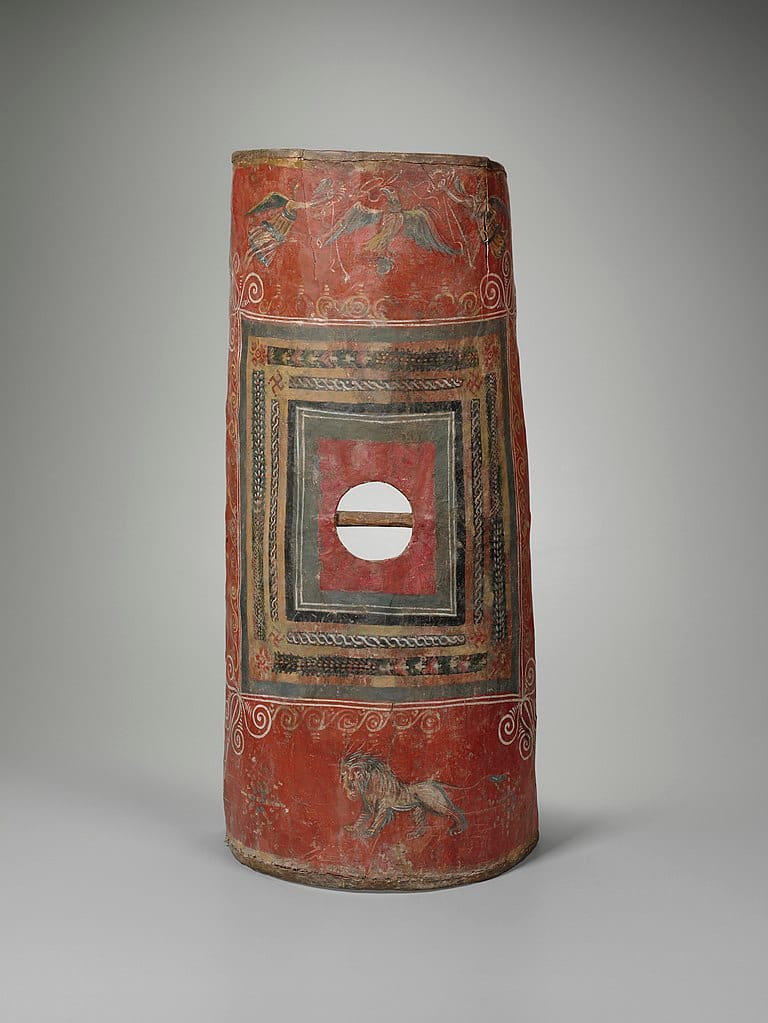
The Discovery of a Legend
Nestled within the sands of time, the ancient city of Dura-Europos, located on the banks of the Euphrates River, now located within modern Syria, served as a cultural and military frontier of the Roman Empire. It was here, during excavations in the 1920s and 1930s, that archaeologists unearthed a relic of unparalleled significance—the Dura-Europos scutum.
This artifact, housed today in the Yale University Art Gallery, provides a rare, tangible connection to the Roman legionaries, known largely through texts and second-hand accounts. In 256, the city fell to a siege by the Sassanids, leading to its eventual capture and destruction. The arid conditions of the region have remarkably preserved organic materials like wood. Given that the city contained a Roman military outpost and was overtaken during a siege, the excavations yielded an unusually large cache of weaponry.
A Shield Like No Other
The scutum's design is a marvel of military engineering. Its semicylindrical shape, crafted to cover the soldier's body from shoulder to knee, was revolutionary. Unlike the flat shields of their adversaries, the scutum offered enhanced protection, allowing Roman soldiers to form the Testudo formation, a defensive tactic likened to a tortoise shell that was nearly impervious to arrows and projectiles.
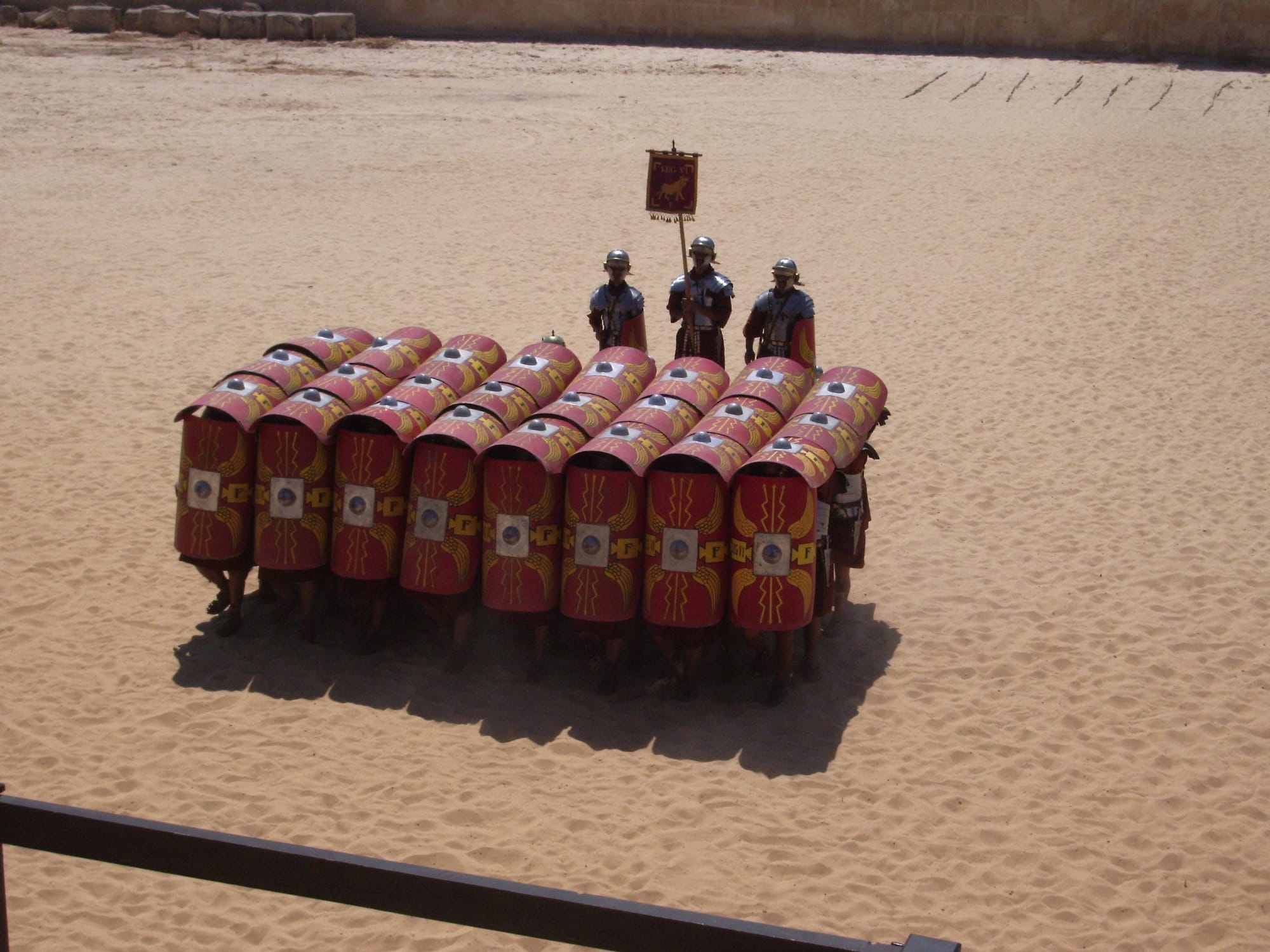
The scutum, characterized by its rectangular, curved design, measures 105.5 by 41 cm and is predominantly constructed from wood. Discovered fragmented into thirteen pieces, it is composed of wooden strips ranging from 30 to 80 mm in width and 1.5 to 2 mm in thickness. These strips are assembled in three layers, culminating in a total wood thickness of 4.5 to 6 mm. At the shield's center is a hole, likely made post-construction, with the umbo (central boss) now missing, along with the original shield hump.
The shield's rear was initially reinforced with wooden strips, which have since been lost, and it is believed to have been covered with a red skin, as noted in the initial excavation report, though this covering has since disappeared. The front surface was layered with fabric and then either skin or parchment, adorned with a painting. Surrounding the central hole are various decorative bands, featuring motifs such as an eagle within a laurel wreath, winged Victories, and a lion.
A Window into the Past
The study of the Dura-Europos scutum has provided historians and archaeologists with invaluable insights into Roman military tactics, equipment, and artistry. Its construction reflects a period of transition in Roman shield design, moving from the rectangular scuta of earlier legions to a more rounded form that offered greater mobility and protection in the heat of battle.
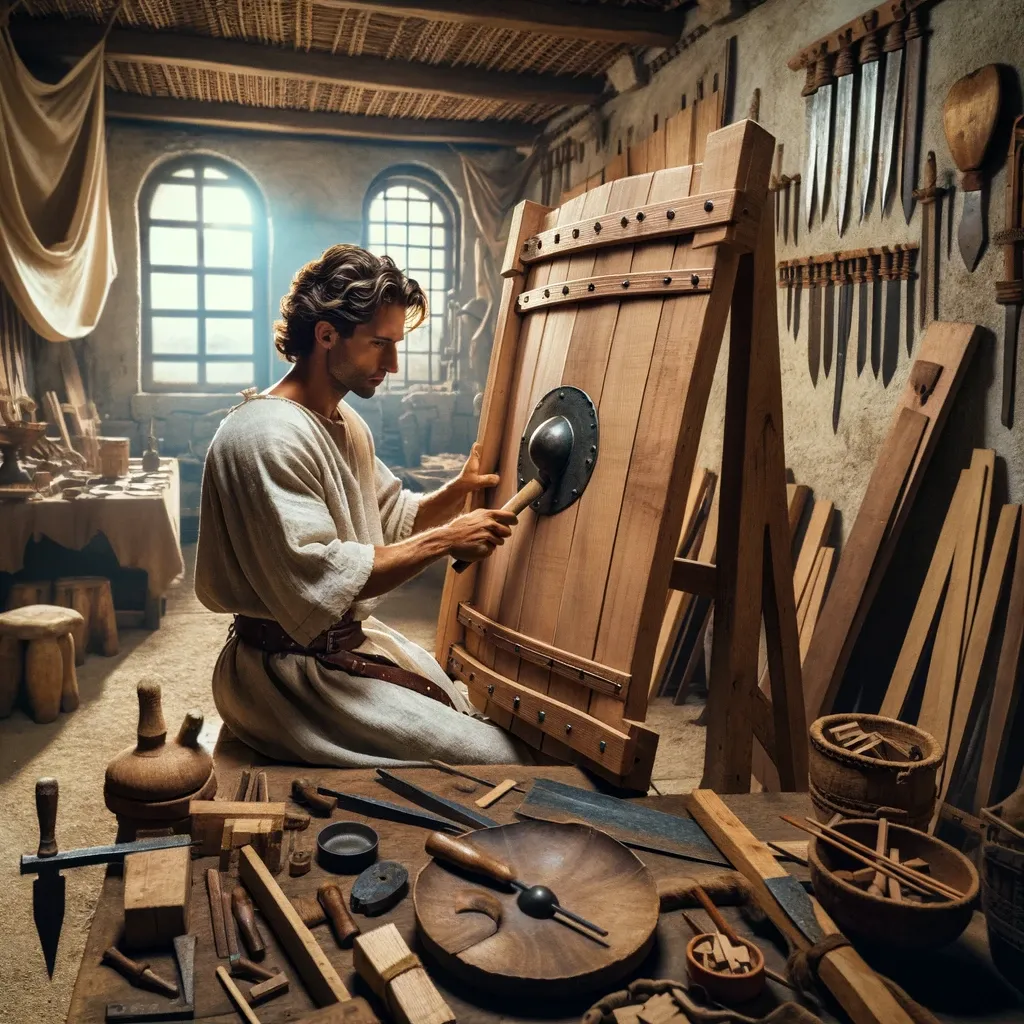
Moreover, the shield's artwork serves as a canvas of Roman ideology, portraying the legionary not just as a soldier, but as a vessel of Rome's divine mandate. The imagery of winged victories suggests a belief in the protective powers of the gods, a testament to the intertwining of faith and warfare in the Roman psyche.
The Legacy of the Scutum
The significance of the Dura-Europos scutum extends beyond its physical attributes. It symbolizes the Roman Empire's reach, its technological advancements, and its cultural impact on the regions it governed. The shield's preservation allows us to appreciate the craftsmanship and aesthetic sensibilities of a bygone era, providing a direct link to the hands that once held it aloft in defence of an empire.
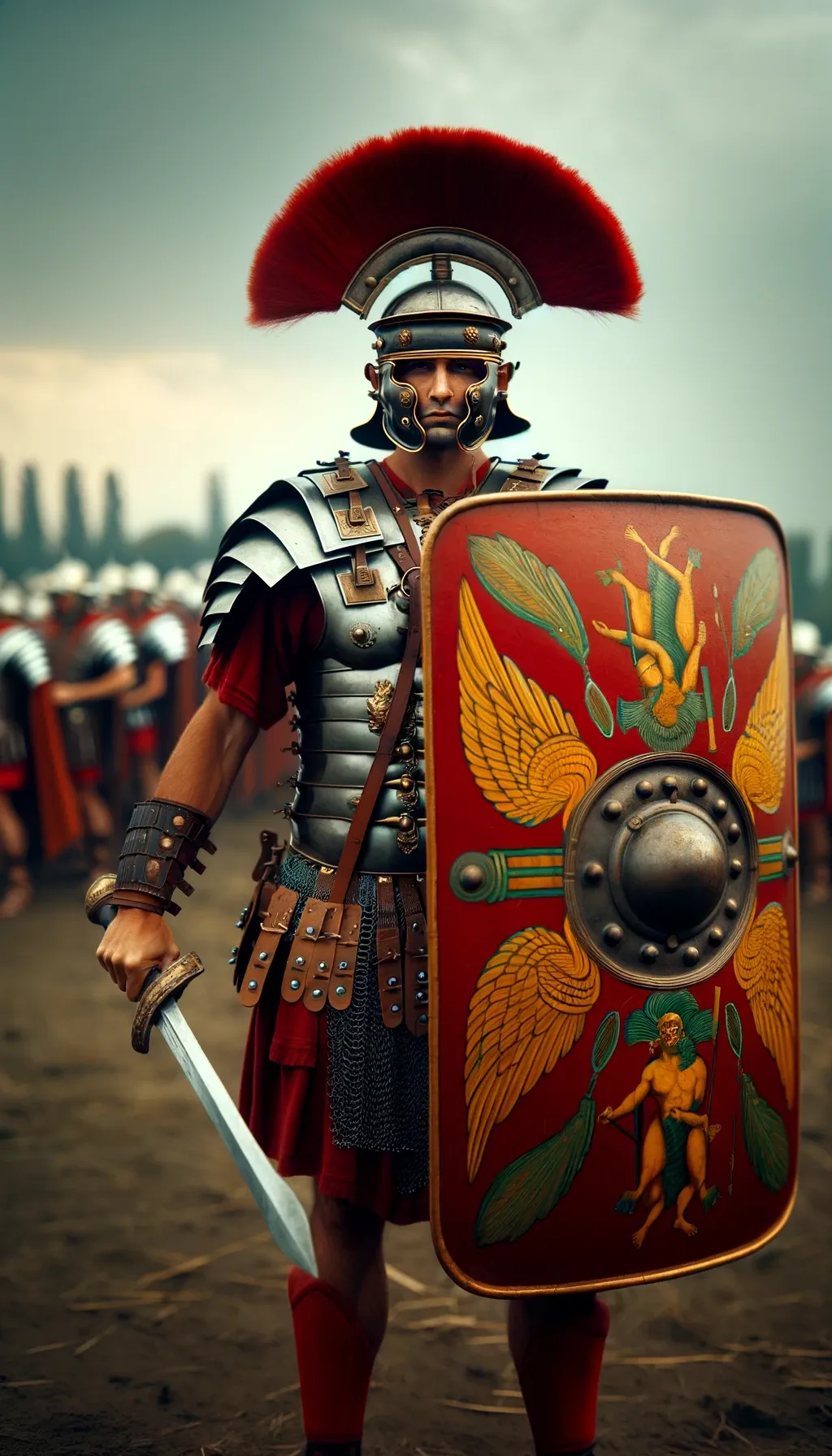
Challenges and Reconstructions
The scutum's survival is a rarity, with most organic materials succumbing to the ravages of time. Its preservation in the dry climate of Dura-Europos was fortuitous, yet it also poses challenges for conservationists seeking to maintain its integrity for future generations. Efforts to reconstruct the scutum, using historical methods and materials, have offered fascinating insights into Roman manufacturing techniques, further bridging the gap between past and present.
A Portal to Antiquity
The Scutum from Dura-Europos is more than an artifact; it is a portal to the ancient world, inviting us to ponder the lives of those who lived, fought, and died under the banner of Rome. It reminds us of the fragility of empires and the enduring quest for understanding our collective past. As we gaze upon the scutum, let us reflect on the legacy of the Roman legionaries and the timeless nature of human endeavor in the face of adversity.
In the end, the Scutum of Dura-Europos stands as a lone sentinel, a guardian of history's mysteries, and a beacon for those who seek to unravel them. Its story, etched in wood, linen, and paint, is a vibrant chapter in the saga of human civilization, echoing the triumphs and tragedies of the Roman Empire.








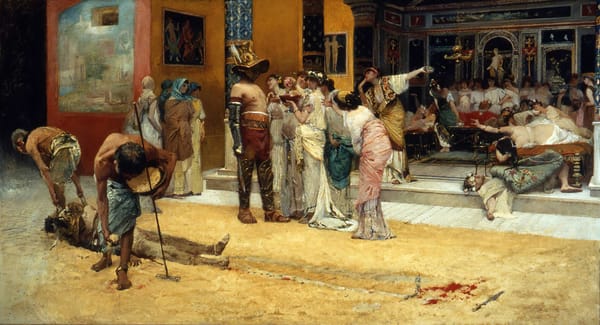
About the Roman Empire Times
See all the latest news for the Roman Empire, ancient Roman historical facts, anecdotes from Roman Times and stories from the Empire at romanempiretimes.com. Contact our newsroom to report an update or send your story, photos and videos. Follow RET on Google News, Flipboard and subscribe here to our daily email.
Follow the Roman Empire Times on social media: